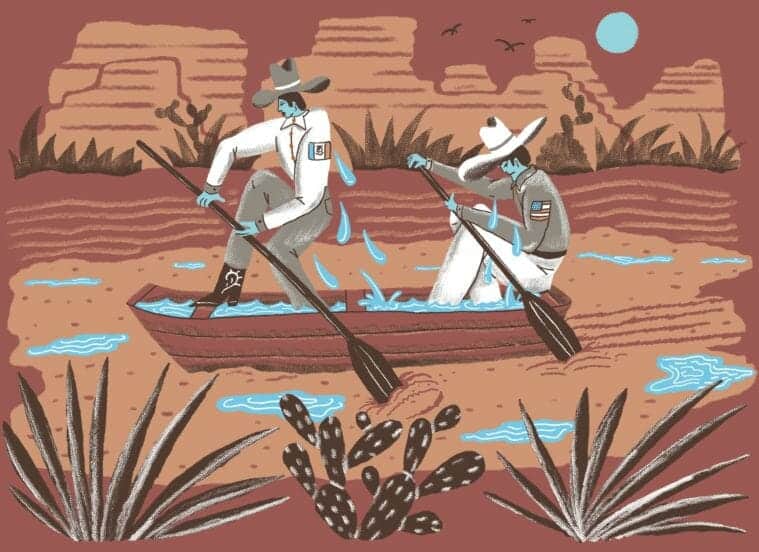In a warmer world, the fight for water can push nations apart — or bring them together
The Rio Grande Valley of Texas is one of the fastest-growing places in the United States. Already hot and arid, and growing hotter, the booming, heavily Latino region depends almost entirely on the shriveling Rio Grande for water. Considered one of the most endangered rivers in North America, the Rio Grande provides drinking and irrigation water to 6 million people and 2 million acres of farmland on both sides of the Texas-Mexico border. Droughts and heat waves in the Valley are becoming more intense, exacerbating water scarcity.
Despite opinion surveys showing that Valley residents are deeply concerned about how climate change is affecting them, local and state officials are paying little heed to their constituents. According to a 2013 federal study (pdf), even before accounting for climate change the region is expected to run a “staggering” water supply shortage of almost 600,000 acre-feet in 2060. At the same time, some Texas border cities have been at the forefront of water conservation, and the US and Mexico have found ways to cooperate on protecting the Rio Grande.
This nine-part collaboration between the Texas Observer and Quartz explores the complexities of border water in search of answers for how people can work together in a hotter, drier world.
In November 2016, an unusual series of meetings took place on the banks of the Dead Sea, an ancient salt lake fed by the Jordan River.
First, three men from three sovereign states convened: one from Texas, in the US, one from Mexico, and one from Jordan.
The next day, the two representatives from North America talked to a water manager from Israel.
And on the following day, the Texan and the Mexican met with the director of the Palestinian water authority.
The friendly meetings required three days, and three separate meetings, because […]
Full article: Shallow Waters

